This gizmo arrived in the mail a while ago...
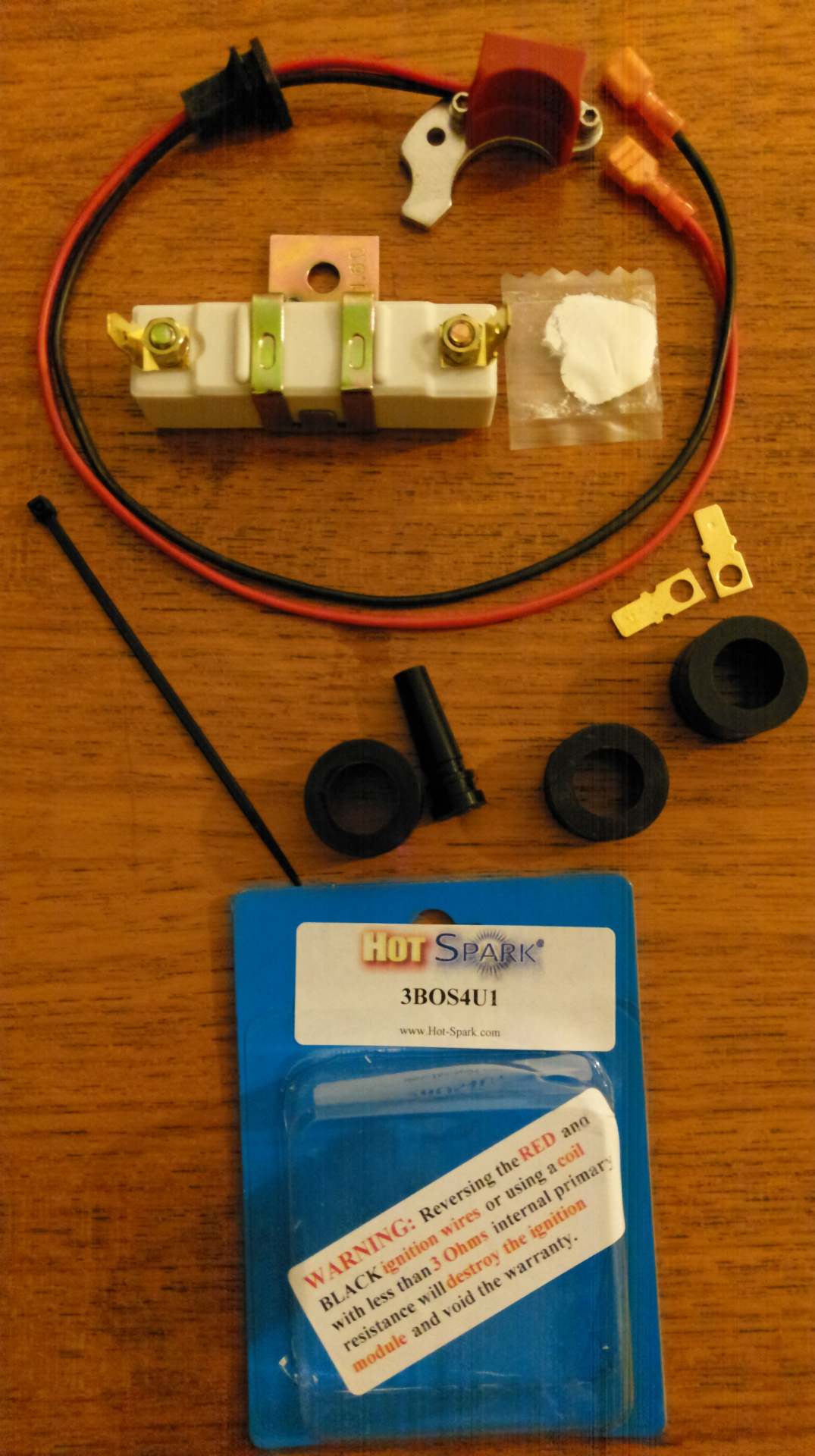
I was feeling a bit down and needed a quick win. So I got stuck into getting rid of points. I wish I had one of these when I had my old hilux years ago.
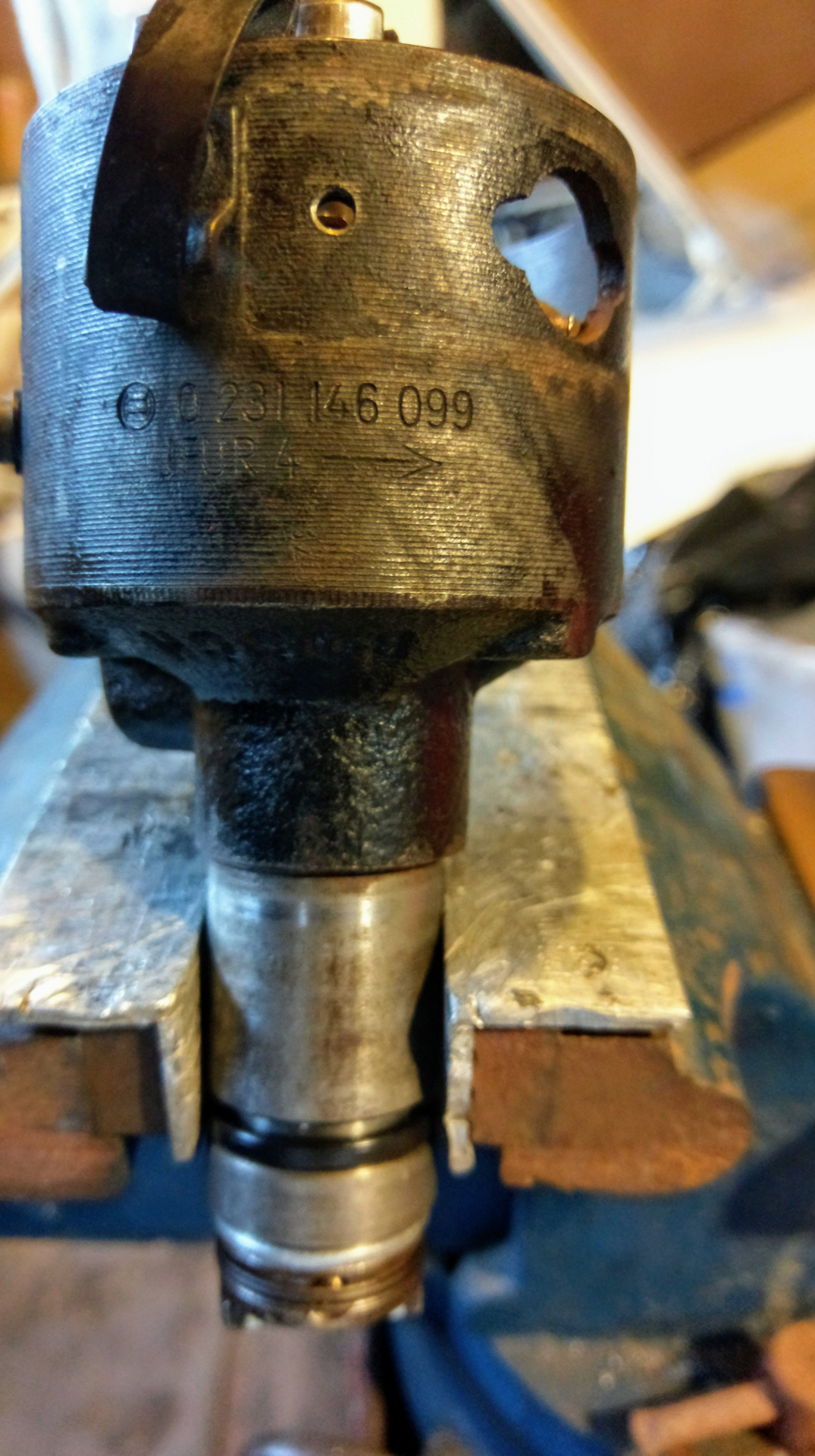
So the first thing was to strip it down. (although I think this pic was after cleaning, but I wanted a record of the part number.)
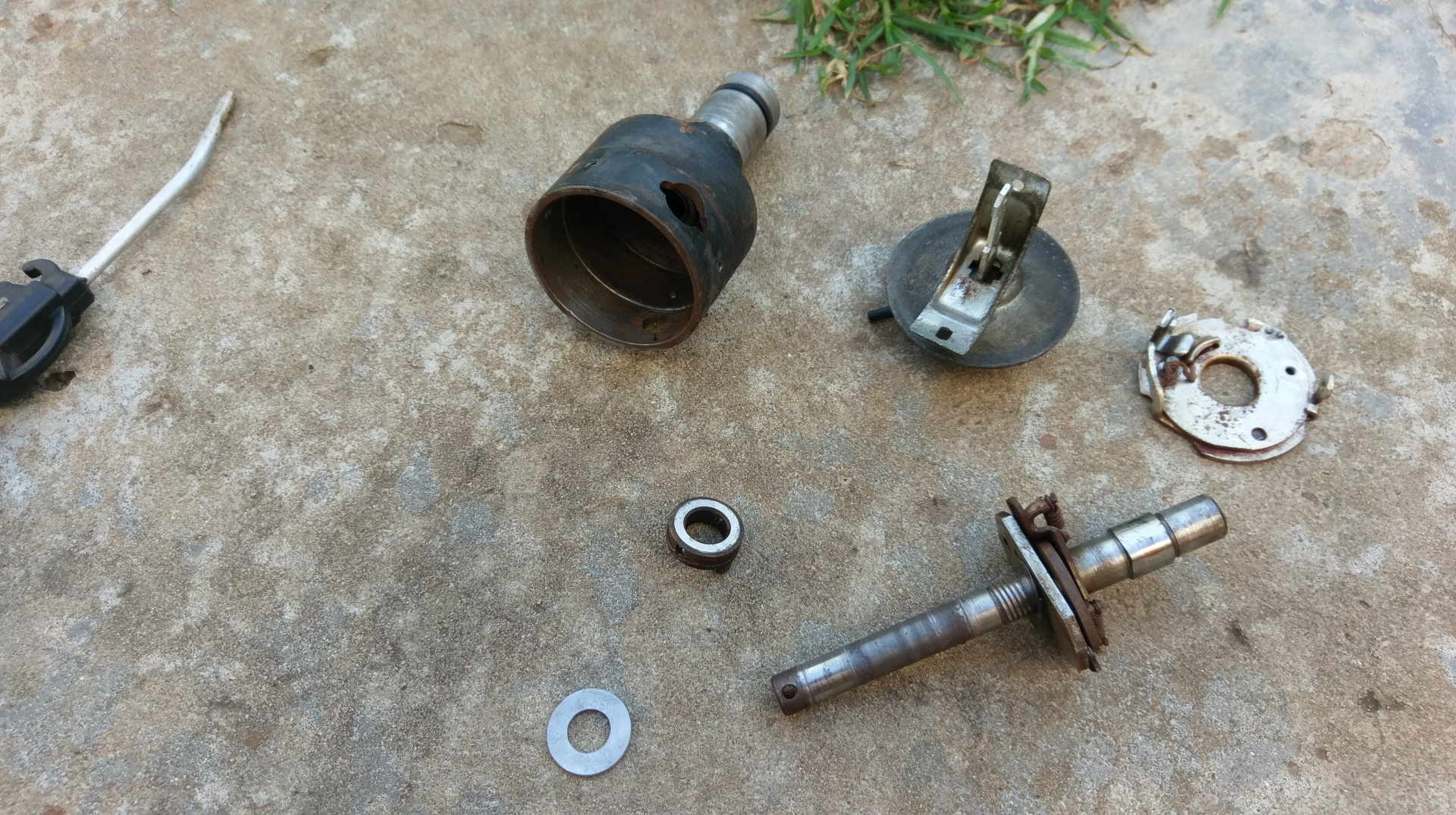
I stripped and cleaned all of the parts. The first thing I noticed was that there was heaps of end-float (I didn't measure but about 1.2mm) in the main shaft. There is a top shim which is quite thin that goes underneath the main plate, whatever it is called. There was also a shim between the bottom of the housing and the offset drive dog. I modified a washer by drilling it out the hole and lapping both sides to ensure it is flat and does not wear out the drive dog. I then broke the existing shim. It was just a fiber washer. So I had to make another spacer out of a thicker washer.
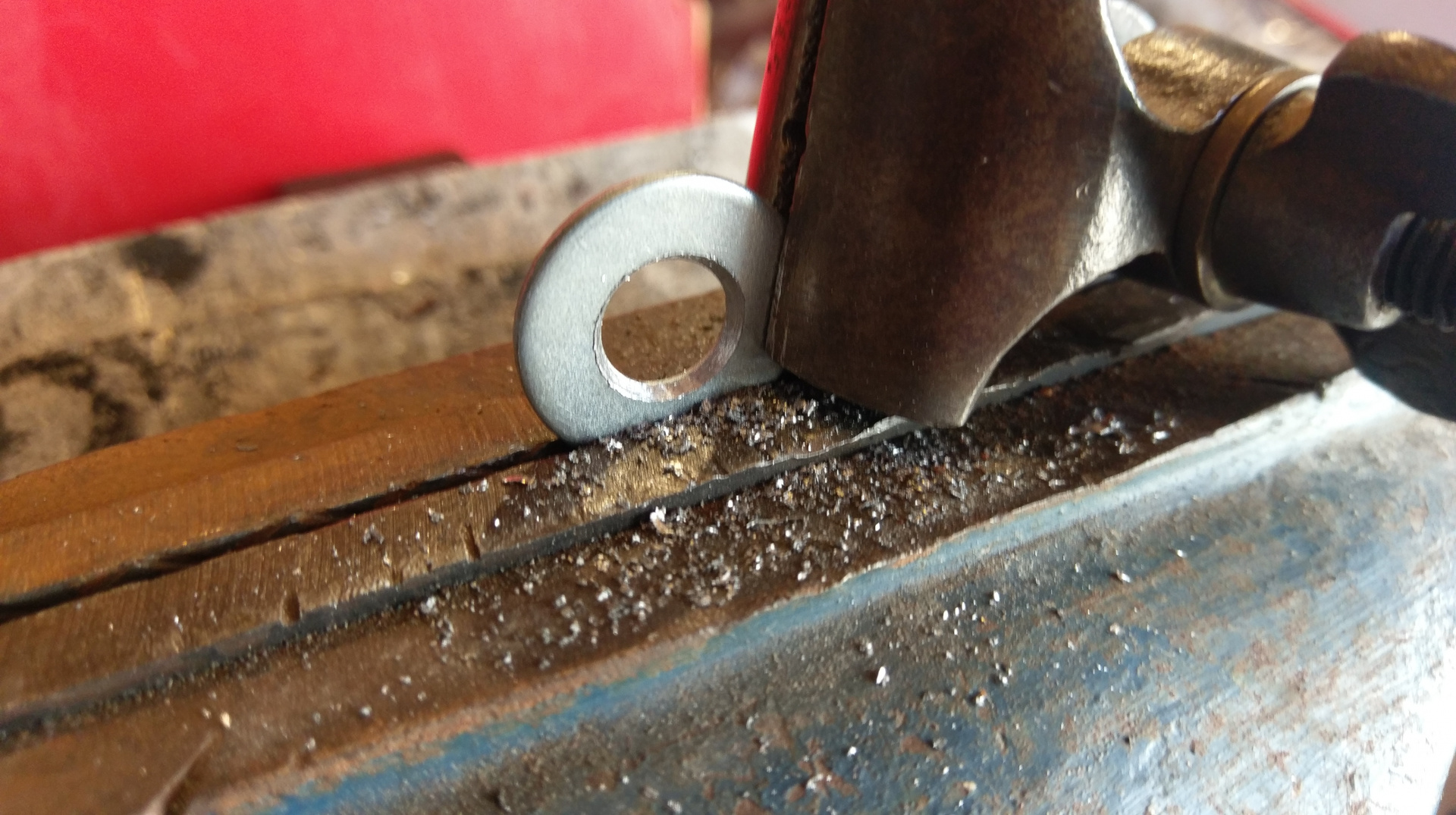
The first pic is the spacer, drive dog, pin and spring re-assembled. The spring going around the drive dog gave me the impression that the pin would be a slip fit, but it needed to be driven out rather firmly with a punch. with the main shaft back in with the new shim/spacer washer there is about 001" end-float. Hopefully that is enough. I noticed on the housing there is an oil hole into the top bush. I guess it is supposed to be serviced by squirting some oil in the hole, and then it dribbles out everywhere. At the top of the bottom part of the shaft there is a spiral. This is there to direct the new oil downwards. I spun the shaft with an allen key in the drill with the hole upwards and watched it sort of suck the oil in.
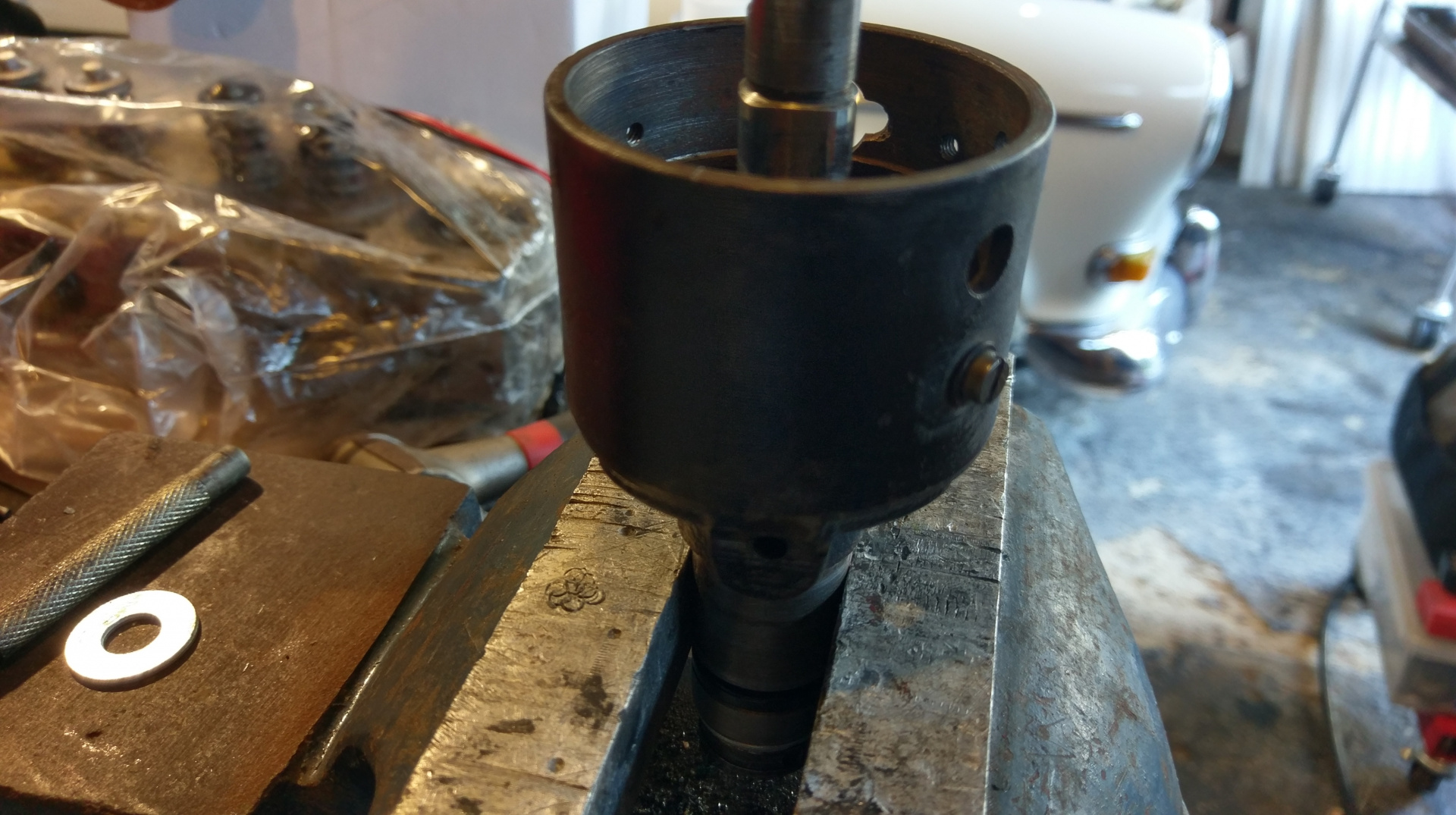
This pic is too dark, but the hole toward the bottom of the housing can be seen.
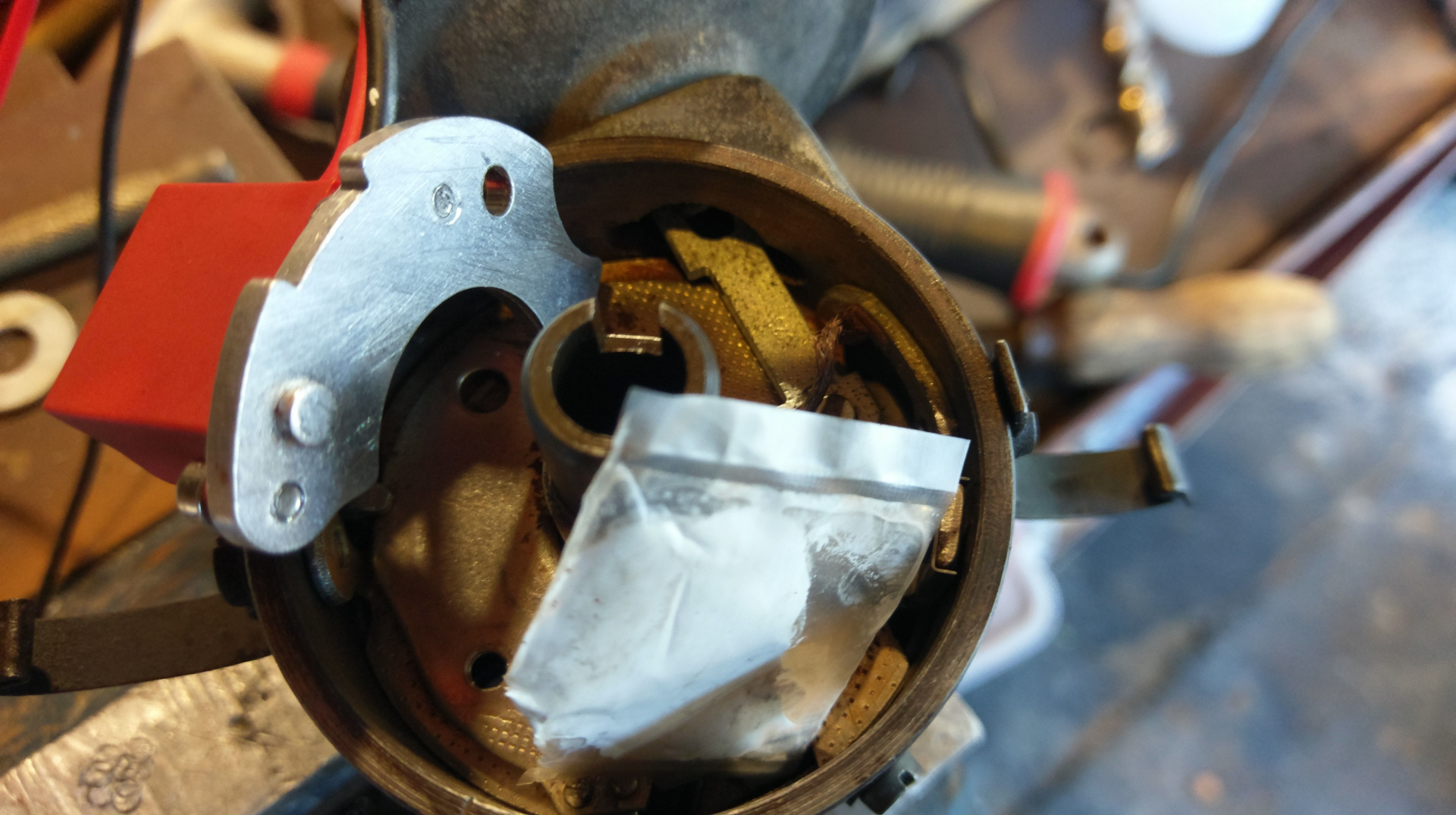
I had to stone the bottom of the unit flat where the thread was raised by tapping. I also had to us a punch to flatten the mounting hole on the vac advance (well much stupider, if that is a word, vac retard) plate as it was raised by many years of having the points over-tightened. Then I fitted it with the thermal paste.
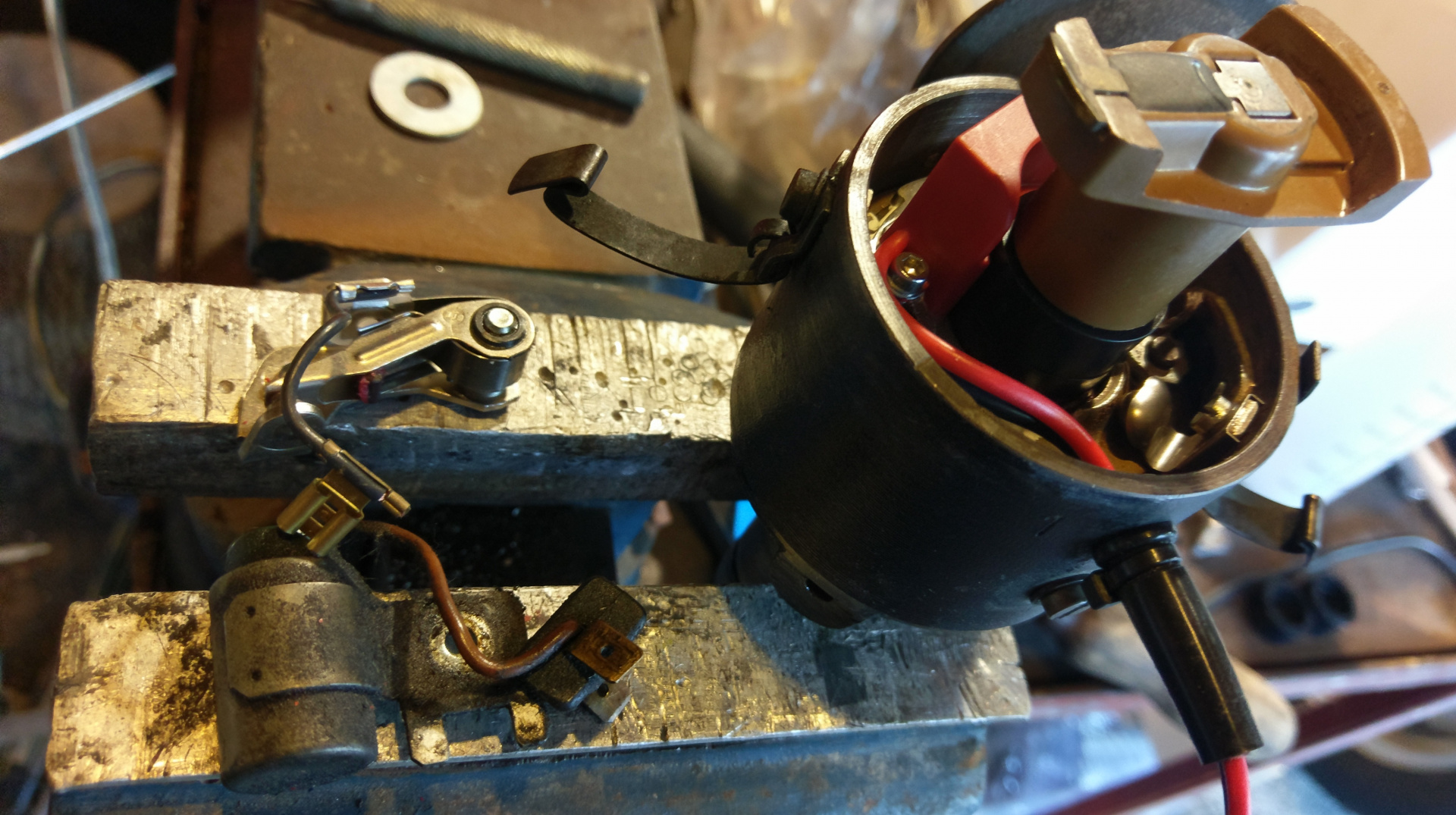
There we go, out with the old and in with the new. I re-fitted the dizzy and it still didn't work. I had to swap the magnet ring for a shorter one. Unfortunately the shorter one was looser, I cleaned it and the lobes with acetone and applied a small amount of gasket silicone and fitted it.
Timing was just as easy as points and on the old smokey rattly engine it seems slightly more stable and a bit easier to start. I did install the ballast resistor between the module and +ve ignition as recommended if charge voltage is a bit too high. Currently the charge is a bit over 14V but you never now when the regulator may crap out or whatever.
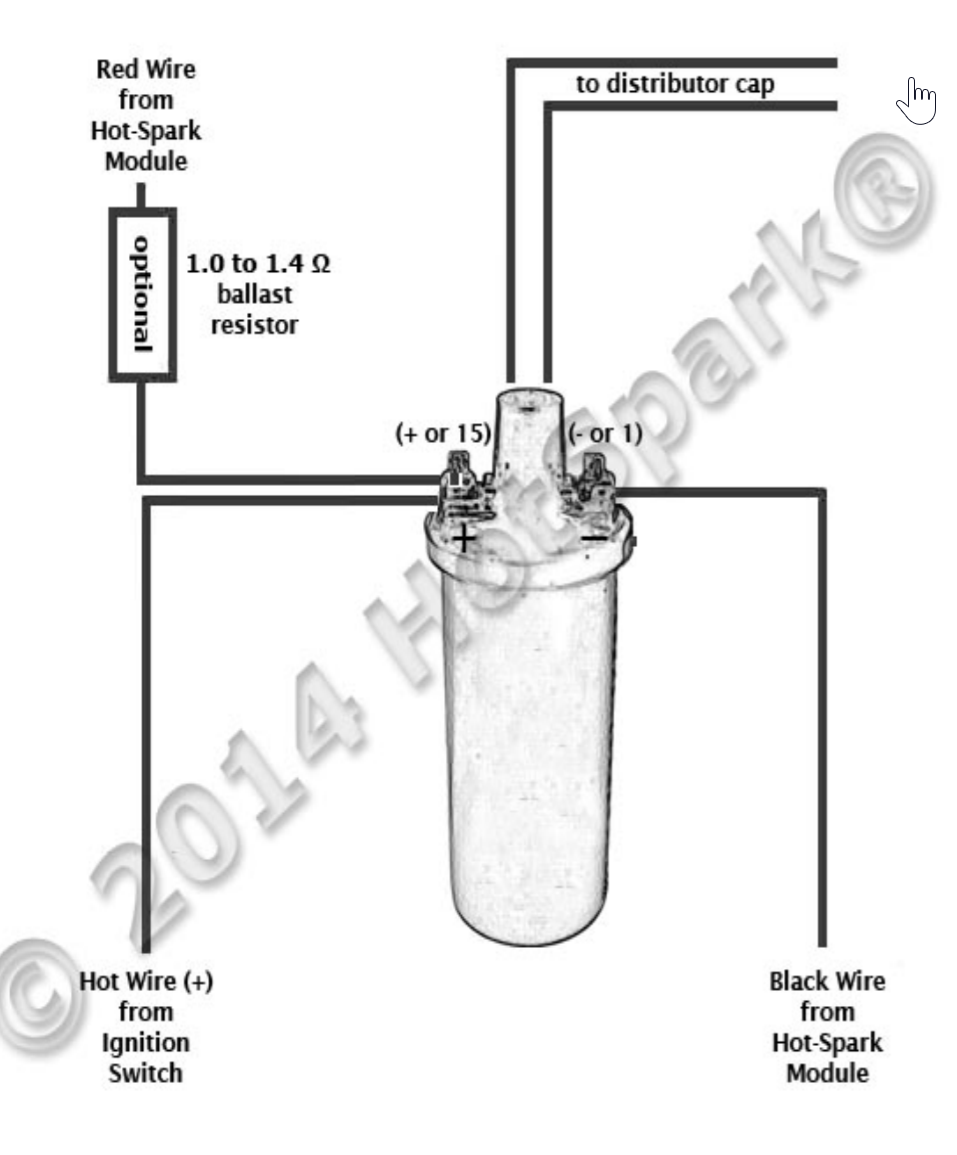
This is a snippet of the installation instructions that can be found on the Hot Spark website http://www.hot-spark.com
I chose this module over the slightly cheaper eBay units as it had a website with install info etc. I am not specifically endorsing this product and I have only been for a brief trip around the block with the poorly running engine and it seems to do exactly what it says on the tin.
-Todd